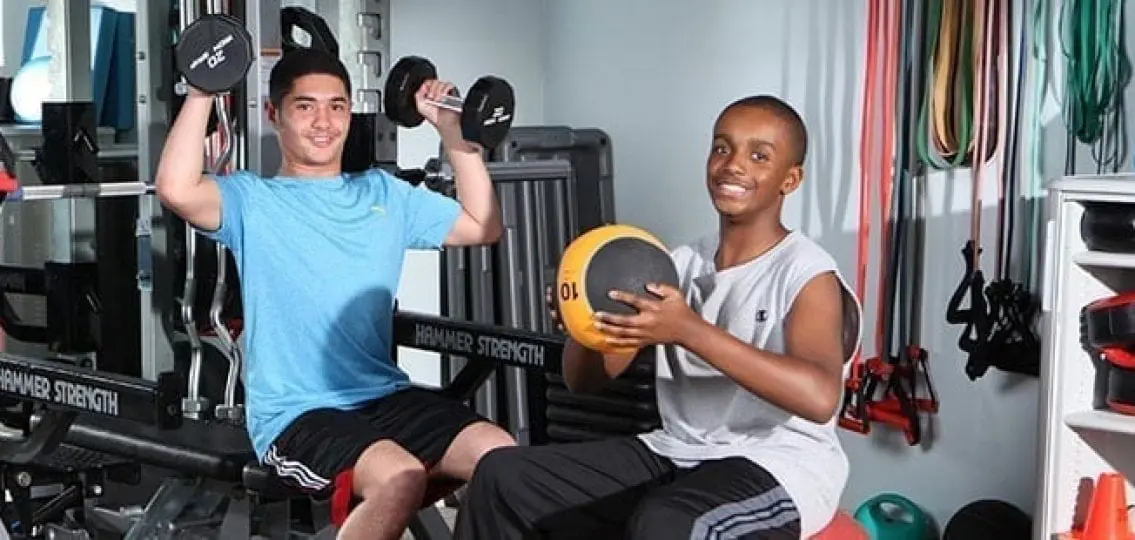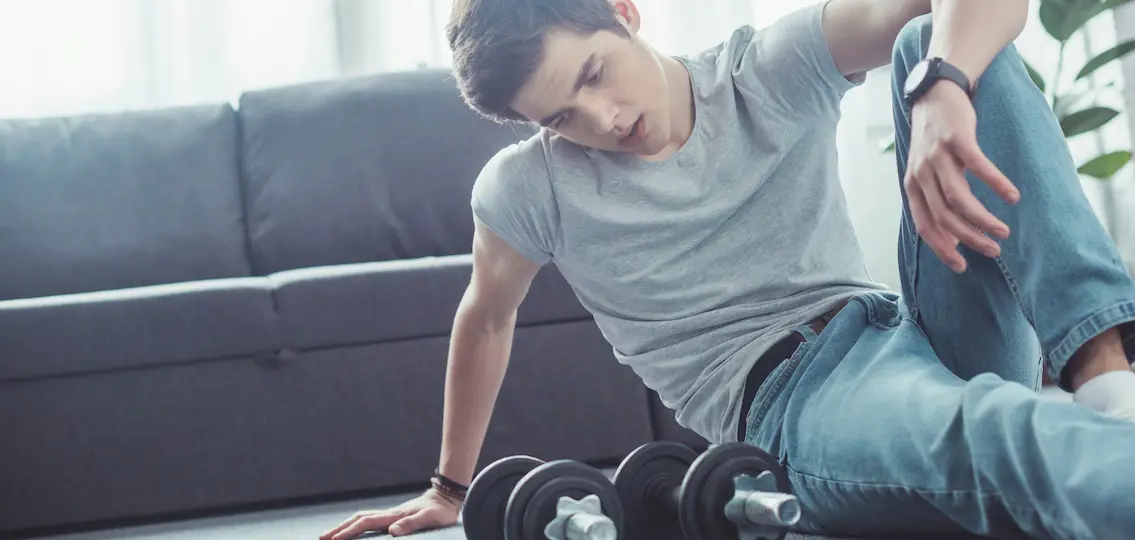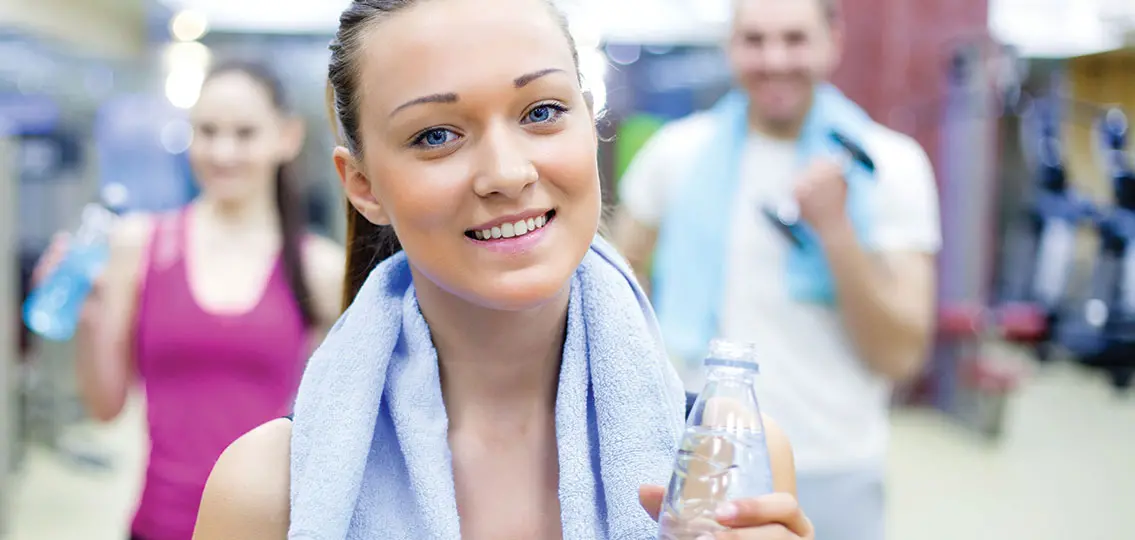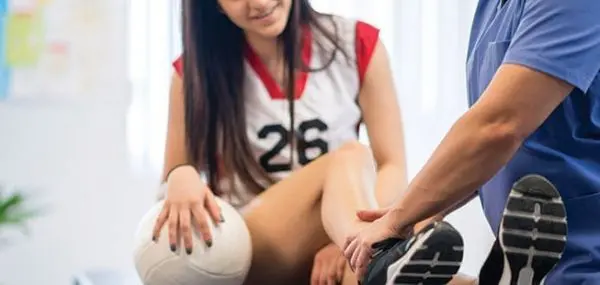My husband and I are fitness fanatics who exercise six days a week. When our twin 14-year-olds asked if they could join us at the gym, we were elated that they wanted to share our love of fitness and spend time with us.

But during our first workout they had lots of questions that we couldn’t answer, such as:
- “Which machine should I use?”
- “Should my target heart rate be the same as the one listed on the elliptical machine?”
- “Is it okay if I lift weights with you?”
Even though we are well-versed in different types of exercise, all our knowledge is based on adult workouts. To find guidelines for teenagers, I turned to the experts.
First Things First
Check up with a health care provider.
Prior to beginning a new fitness program, teens should have a physical with their primary care provider to assess their health and screen for any injuries or illnesses that might make training unsafe, says Dr. Teri Metcalf McCambridge, a pediatric sports medicine specialist at Towson Orthopaedic Associates in Baltimore.
Arrange a session with a trainer
After being cleared for participation, teens should learn how to properly use the machines and weights. Most gyms have personal trainers who offer a free session on how to use the equipment, and teens can also ask staff members for advice as questions arise. It is important that teens start out slowly with any routine or program to prevent injuries.
Most gyms offer a variety of cardio equipment, such as ellipticals, treadmills, and stationary bicycles, but teens should be supervised at first to make sure they use these safely. In her practice, McCambridge has seen injuries to patients from all of the following mishaps: riding a stationary bike extremely fast and then releasing one foot; running on a treadmill at top speed then falling off the back and hitting the wall; and running on a treadmill in bare feet and catching a toe under the belt. Teens, she says, should “wear shoes and use the equipment only to their level of ability.”
Cardio Workouts for Teens
Cardio equipment often has built-in heart-rate sensors. Many trainers recommend using the heart-rate monitor on machines to target an effort zone that will burn calories and strengthen the heart. But what’s an appropriate rate for teens? “Children’s maximal heart rates tend to be lower than adults,” says McCambridge. If your teen is interested in doing the calculations, there are guidelines from the National Council on Strength and Fitness: Under the age of 20, multiply age by .7, and then subtract that result from 208. (208 – (.7 x age))
But if you’d prefer to skip the math, there’s a simple guideline, says McCambridge: Children ages 6 to 17 should exercise for one hour every day.
Strength Training for Teens
In addition to using cardio equipment, teens can strength train using their own body weight, free weights, or weight machines. But they should use caution and avoid overdoing it, says Daryl Thayil, a personal trainer and content creator for the website Advanced Weightlifting.
“Make sure that they are training with proper form and appropriate weights,” says Thayil. “While their bodies are in rapid growth and the spine is maturing, improper technique can lead to significant injury.” That’s why Thayil recommends good coaching—whether it’s a trainer at the gym or even a strength coach through their school.
Group Fitness Classes for Teens
Most gyms offer a wide array of group fitness classes, and many gyms allow kids to start participating in these around age 13. Both Thayil and McCambridge recommend yoga as an addition to a teen’s fitness routine. “Yoga is a great option for group classes and teaches a different kind of strength and control than other fitness group classes,” says Thayil.
Bottom Line: It’s Worth It
Whichever way your family chooses to exercise, it’s worth pursuing an active life. Active teens “have demonstrated better performance in school, improved bone density, improved lipid profiles, improved self-esteem, and a decrease in high-risk behaviors,” says McCambridge. Plus, says Thayil, there’s the discipline and patience required, as well as proven reductions in anxiety and depression.
For our family, the best parts are seeing our twins get stronger both physically and mentally and having the chance for real conversations. Hey, the actual exchange of words may only be about their target heart rate, but the togetherness is enough to make our family trips to the gym our number-one priority.

Is the Gym Too Pricey?
The cost of gym memberships can vary depending on the area and options offered. Sometimes health insurance plans offer partial reimbursement for gym membership fees. There are also free ways to have a gym workout without belonging to a gym. Consider these:
- Some high schools have gym equipment available for free to residents after school hours.
- If you have a cable subscription, check out the On Demand option for free workouts.
- Look in your local library or on YouTube for workout videos




